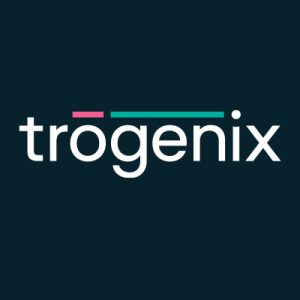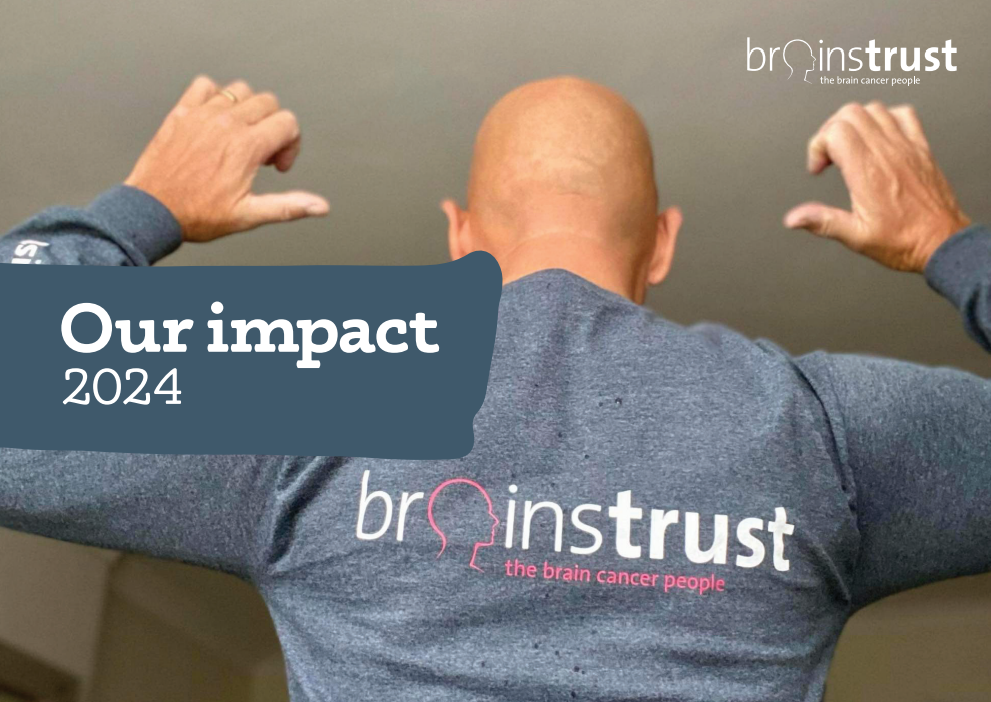There’s been a fair amount of news about a early phase trial for people living with GBM. A groundbreaking new treatment for aggressive, treatment- resistant cancers has just secured £70 million in funding and is heading towards clinical trials in early 2026. This isn’t just another incremental step forward – it’s a completely new approach that could change the game for people living with aggressive cancers, including GBM.

What makes this different?
This research takes a new approach by doing two powerful things at once. The team at Trogenix (a biotech company spun out from the University of Edinburgh) has developed a clever gene therapy, (including a technology platform called Odysseus) that both destroys cancer cells AND teaches the immune system to fight back. It’s a combined assault against glioblastoma.

How does it work?
The treatment uses a harmless virus (called an adeno-associated virus, or AAV) as a delivery vehicle. This courier gets injected directly into the tumour and seeks out glioblastoma cells. Inside this virus is a specially designed piece of DNA with three intuitive parts:
The sensor: this part switches on inside aggressive glioblastoma cells. It stays away from healthy brain cells, which means the treatment knows exactly where to go and what to target.
The toxic producer: this produces an enzyme that works with a drug taken by mouth to create something toxic. It kills the cancer cell it’s in, plus its nearby neighbours.
The immune wake-up call: The therapy produces a powerful immune signal called IL-12 that essentially wakes up your immune system so that it attacks the cancer cells. But the really exciting news: this doesn’t just deal with the tumour that’s there now. It also trains the immune system to remember what glioblastoma looks like. So, if any cancer cells are hiding or if the disease tries to come back, the body already knows how to fight it off.
What does this mean for people living with GBM?
For anyone living with GBM, the challenges of this disease are already well known. Current treatments are tough, and outcomes haven’t changed over the years. What makes this approach so promising is the potential for what researchers are calling a “one-and-done” treatment – a single therapy that could not only tackle the tumour but also provide long- lasting protection. And because it specifically targets cancer cells while leaving healthy ones alone, there’s hope for fewer side effects compared to traditional treatments that can’t always tell the
difference between the good cells and the bad ones.
The importance of the patient and caregiver perspective
What’s been particularly encouraging about this research is that the patient voice has been part of the journey and brainstrust is delighted to have a played a role . We reviewed this research from a patient and caregiver perspective a year ago as part of the BTR NTA programme and it’s clear that the team behind this work understand
what really matters to people living with glioblastoma and their families. Dr Helen Bulbeck, brainstrust Director of Services and Policy commented, “It’s a privilege to represent patient and caregiver voices on this programme, as Brain Tumour Research works to see more therapeutics or devices enter human trials and more research focused on drug discovery.”
What’s next?
The team at Trogenix is now working towards an early phase clinical trial, with the first glioblastoma patient expected to receive the treatment in early 2026. That might feel like a long time when you’re living with this disease day by day, but in research terms, this is quite quick. It’s important to be realistic – this is still early-stage research, and we won’t know how well it works until the clinical trials are completed. Not every promising treatment in the lab translates to success in patients. But the science behind this is solid, the funding is substantial, and there’s genuine reason for optimism.
Beyond GBM
The technology platform behind this treatment (called Odysseus®) is also being developed for other aggressive cancers, including colorectal cancer liver metastases, liver cancer, and lung cancer. The approach could potentially help many people beyond the brain cancer community.
The bottom line
Living with glioblastoma requires enormous resilience while managing the day-to-day reality of this disease. What’s encouraging about this research is that it represents a fundamentally different way of thinking about treatment – not just killing cancer cells but empowering the immune system to become a long-term guardian against the disease. This is exactly the kind of innovative, ambitious research that the glioblastoma community needs and deserves. If you want to learn more about Trogenix and its work, you can visit the website at www.trogenix.com.
To support research like this, you can get involved with brainstrust’s PRIME programme. Find out more here.









